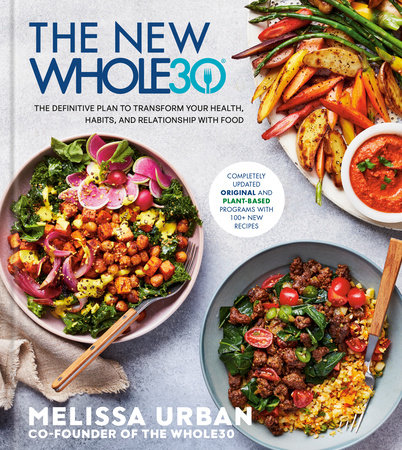Excerpt
The New Whole30
PrefaceOn April 21, 2015, I was in midtown Manhattan doing media for the launch of my second book, The Whole30. I had finished my interviews and was walking back to my hotel when I heard someone say, “Hey, are you the Whole30 lady?” I’d been recognized in public before, but never in the middle of New York City—and on the day of my book release! I delightedly confirmed, and she immediately launched into the details of her Whole30 success story. I walked away thinking it was an auspicious sign.
It’s hard to believe the Whole30 has been around for more than fifteen years, and that book was written
nine years ago.
The Whole30 would go on to become a #1
New York Times bestseller, selling more than 1.6 million copies in North America alone and changing the lives of millions of people just like you. Since then, the Whole30 program has only continued to grow in reputation and influence, cementing it as a well-respected dietary protocol. We’ve been featured in dozens of major media outlets, you can now walk into any Chipotle and order a Whole30 salad bowl, and I’ve written six more books about the program—seven, if you count this one.
The Whole30 is obviously here to stay—and yet, a lot has changed in the last nine years. (More than just my last name. Twice, but who’s counting?) I’ve been dreaming about updating
The Whole30 for a few years, but in 2020, I realized the book needed far more than just an update. The Whole30 was ready for a whole new energy, tone, and voice, with fresh content designed to incorporate the sweeping evolution that the brand, the program, and I had undergone.
Plus, we got a few things wrong back then, and it was time to correct that.
Science is Gonna Science Science is always evolving, leading us to new understandings of the way various foods and ingredients interact with our bodies. The scientific process is that of observing, asking questions, and seeking answers through tests and experiments, and that often includes challenging previously held beliefs to get further at the truth. The science I shared in
The Whole30 was grounded in the research and hypotheses of the time. I relied on trusted healthcare advisors, medical doctors, and registered dietitians to help me evaluate that research and apply it to the Whole30 Program Rules. To our credit, most of the rules still have a substantial number of current studies supporting them.
Most, but not all.
In some cases, we extrapolated the findings of studies in a more negative way than they deserved. (Hindsight is always 20/20, and everyone has their biases.) In others, the concerns we noted based on earlier research simply didn’t bear out upon further study. Today, we have the benefit of nine additional years of scientific evidence. And as we reviewed that evidence, it became obvious that the concerns we held about some ingredients and their impact on the body were overstated. To put it another way, we thought you needed to eliminate these foods for Whole30 success, and it turns out you probably didn’t. As a result, you’ll find a few new rule changes here to address that issue.
Some of these changes may surprise you, even if you consider yourself health conscious. (Perhaps
especially if you consider yourself health conscious.) We all have preconceived notions about what is “healthy,” based largely on our spheres of influence—our friend group, the media we consume, the experts we trust, and our own personal experience. But my goal is to make the Whole30 as successful as possible for as many people as possible, and that means approaching new research with an open mind and a willingness to make changes where needed. I believe it’s a good thing when the people you trust to bring you science-backed information say, “We got it wrong, and here’s how we’re going to fix it”—ideally with references.
So, yes, in this book, some of the Whole30 rules have changed. The good news is that these rule changes add things back
into the program. To say it a different way, as the result of our research, we’re eliminating
less in this new version of Whole30 and encouraging you even
more to keep your diet broad, free, and joyful when your Whole30 is over. That’s good news!
The goal of the program has always been to eliminate the smallest number of foods while being maximally effective for as many people as possible. Considering that the way foods interact with our bodies is so individual and no two people’s “ideal” diet looks the same, this is a tall order. However, I believe that the deep dive we did into the research in preparation for this book helps the Whole30 achieve this goal, with fewer foods and ingredients on the “no” list, more accessibility and options during your 30-day elimination, and an even greater sense of food freedom when your Whole30 is over.
For those of you familiar with the 2015 Program Rules, you can preview a list of rule updates on page 29. (Wine is still a no. I didn’t want you to get your hopes up.




